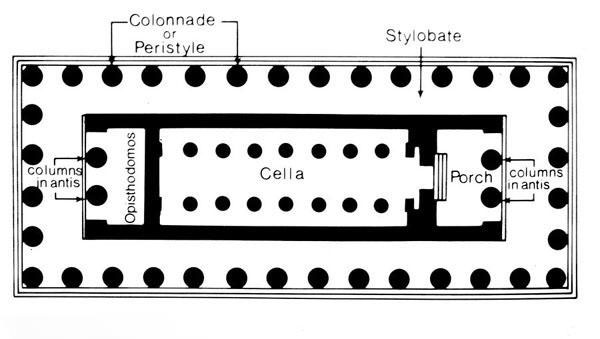The best known symbol of ancient Greek civilization is the temple. It was during the seventh century that the temple form was defined, resulting in a majority of the structures being built in stone. The first step toward implementing a standard ground plan for temples was elaborated from those that had evolved during the Geometric period. Various architectural features that evolved during the Geometric period include: the adoption of a rectangular plan for a temple, with a colonnade or peristyle around the rectangular structure (cella) that housed the cult statue. The peristyle had become an important temple feature and would remain so.
It was first theorized that this type of peristyle feature (identified as a columned porch or open colonnade) was first identified in the eighth century at the Temple of Hera at Samos. Further research has indicated that the column supports for the roof first surrounded the cella of the second Heraion, which was added during the seventh century. This type of emphasis to the peristyle can be seen at the Temple of Haphaestion (449 BCE). From looking at Roman villas, it is speculated that this type of temple style was adopted from the sacred and implemented into domestic spheres.
Sources: Biers, William R. The Archaeology of Greece. New York. Cornell University Press, 1980

Carissa Racca
